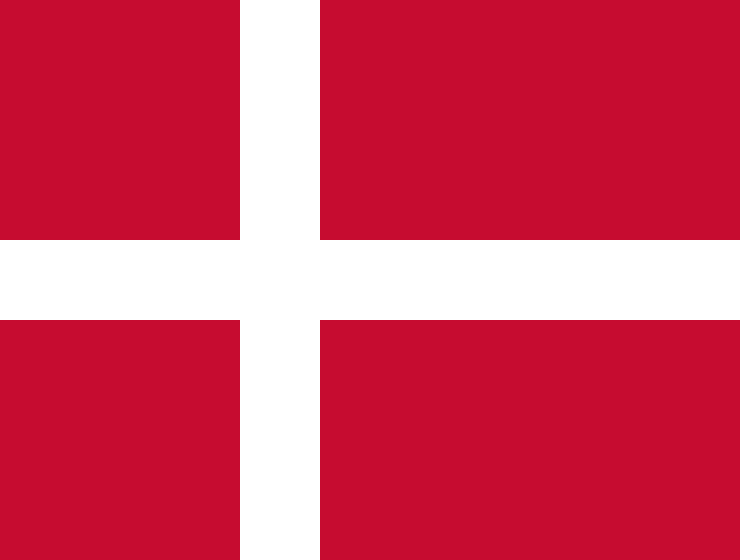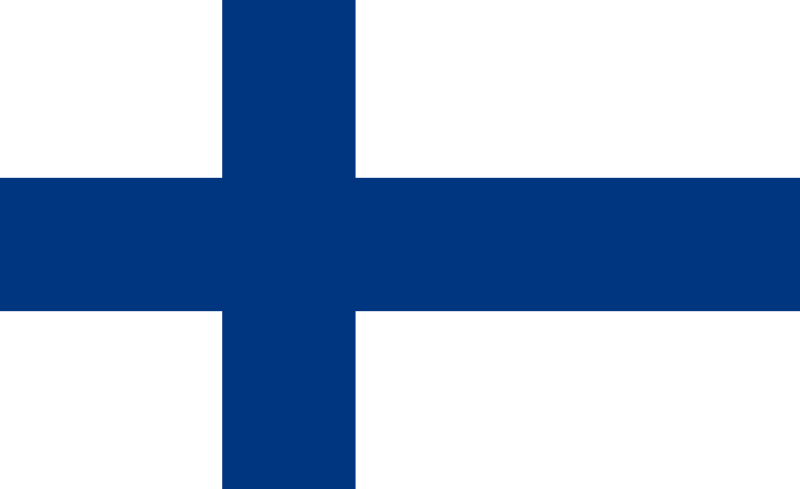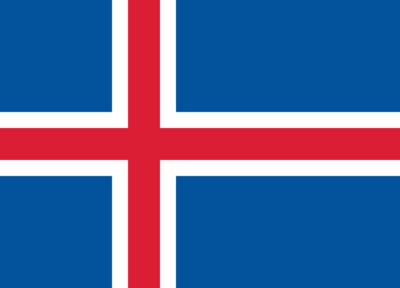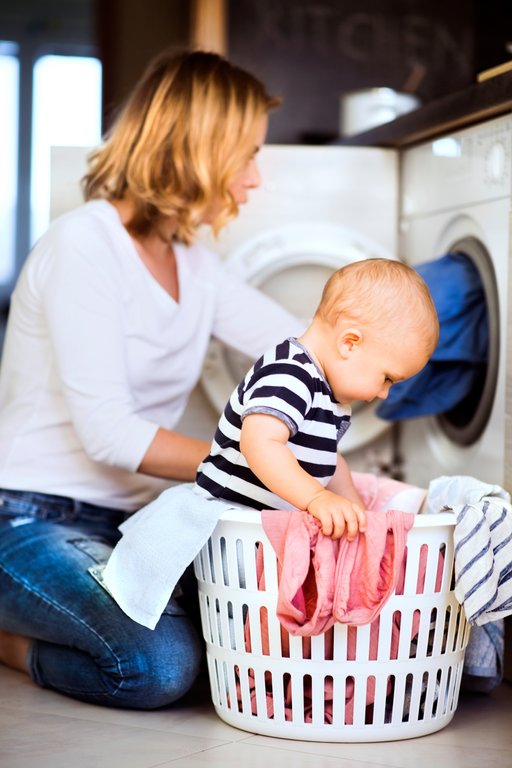Childcare Infrastructure in the Nordic Countries
How key infrastructure can mitigate gender segregation in the labor market.
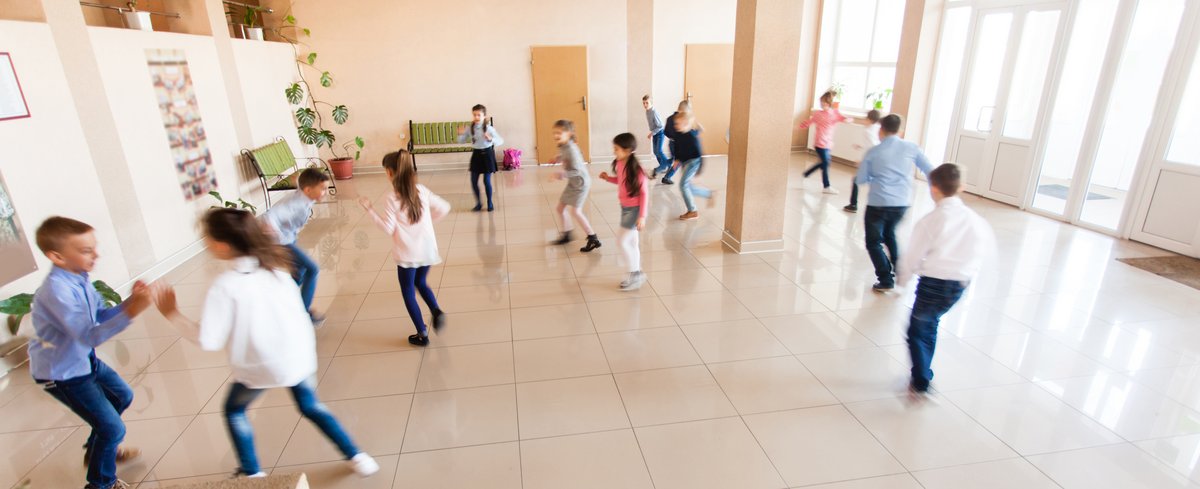
Summary: Childcare infrastructure is largely understood in the Nordic countries as including paid parental leave, access to universal and subsidized childcare, and individual rather than joint taxation. Childcare infrastructure has been shown to help economic gender equality – but there is still room for improvement. A cycle can exist where the partner who is less well paid tends to do more at home, leading to them often choosing less time-consuming work. This can reinforce gender pay gaps and existing workforce hierarchies.
What is childcare infrastructure?
Just as roads and power supplies are necessary infrastructure for the physical functioning of society, paid parental leave and universal childcare are necessary for the social functioning of society and maintaining the labor force.
The concept of childcare infrastructure is a relatively new phenomenon, yet it has gained immense traction in the political debate. Childcare infrastructure includes paid parental leave, access to universal childcare, and subsidized childcare. The Nordic countries share similar characteristics that are commonly associated with comprehensive social safety nets which are mainly tax-funded. These systems are built on some fundamental premises, namely:
- an overall high tax burden;
- public pension plans;
- a high percentage of workers belonging to labor unions; and,
- a labor market built around the tripartite relationship between employers, trade unions and the government.
Extensive Nordic labor regulations encompass rules that support the different social safety nets. For instance, in the Norwegian and Finnish systems, paid parental leave is found within labor law legislation as childcare infrastructure is considered a way of supporting working environment conditions. Research has also shown that labor unions had an important impact in the development of paid parental leave in the Nordic countries - a development highly influenced by the large number of female members of Nordic labor unions.
Taxation and social insurance in the Nordic countries are naturally interlinked; one collects and the other distributes. Nordic tax scholars often argue that joint taxation is a key contributor to gender inequality as joint taxation incentivizes the practice of one spouse assuming the responsibility to financially support the family while the other spouse, often the woman, remains at home and cares for children and household or, alternatively, is only employed part-time as a secondary earner.
How does childcare infrastructure impact gender equality?
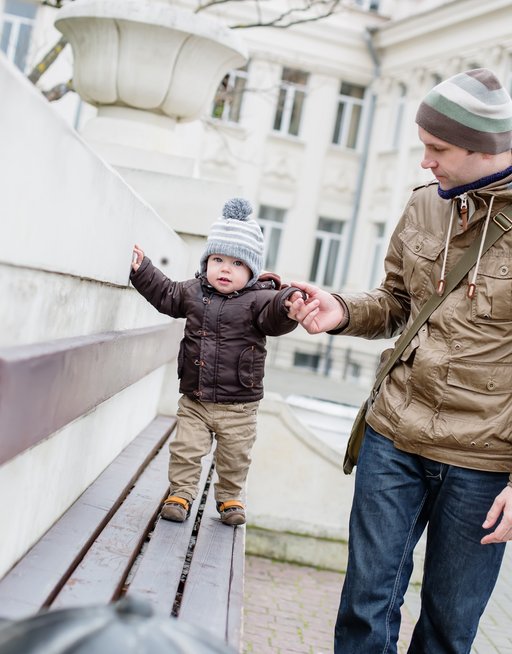
Economic gender equality envisages women having the same opportunities as men whether it is the same opportunity to work full-time, to advance in their career, or to attain equal pay. There is a general belief in the Nordic countries that equally shared parental leave will strengthen opportunities for women in the labor market. This is particularly valid when considering the possibility of achieving and maintaining full-time employment, closing the wage gap, and facilitating women to be more easily promoted to senior positions.
The Nordic countries have, to a certain extent, managed to grant women access to the labor market as a result of the childcare infrastructure regulated through an interlinking of tax, social insurance, and labor law provisions. They have consequently been more successful in enabling women to join the labor market than elsewhere, whether it is part-time or full-time, in addition to aspiring for equally shared responsibilities both inside and outside of the home.
As a general rule, the Nordic countries award social welfare benefits, including aspects of childcare infrastructure, on criteria linked to work (and therefore payment of taxes) and/or residence. Several of the Nordic systems base the reimbursement level on salary and previously paid taxes.
Parental leave
Paid parental leave is funded differently across the Nordic countries. It can either be paid by the employer, through payroll taxes, or by the employee, through fees or taxes based on their employment income. In some countries, Denmark for instance, benefits also stem from the employment contract meaning that some employers may pay additional parental leave as terms of employment. For those who have not been able to work full-time or have been unemployed in the time leading up to the pregnancy, there is a minimum level of paid parental leave acting as a safeguard. See Table 1 for a broad comparison of the rules in 2024. Note that the level of reimbursement that is received varies between countries. For instance, some countries pay 100 percent for part of the leave and a reduced amount for the remainder of the paid leave.
| Please note that the policies and amounts stated in this article were correct at the time of publication, but often change! See the links below to get up to date information, such as at the Nordic Information on Gender. |
Several of the Nordic countries have reformed their parental leave systems in the last few years. Finland‘s reform in August 2022 aimed at equally recognizing a broader spectrum of families than the previous more traditional system did. Consequently, the new rules acknowledge and support parents engaged in various forms of entrepreneurship and self-employment and families with non-biological children. Denmark also revised their paid parental leave in August 2022 as a way of complying with the new EU Directive 2019/1158, which establishes a minimum of 4 months of parental leave per parent.
The trend in the Nordic countries is largely towards an equal distribution of parental leave between the two parents. While this has led to more economic parity between the sexes than elsewhere, there remain some thorny issues, including the lack of take-up amongst men and the knock-on effects of women still taking more responsibility in the home. Legislation in the Nordics increasingly makes provisions for single parents, adoptive parents and same-sex parents, but this is not explicitly covered in this article.
Table 1: The extent of paid parental leave in the Nordic countries at the time of publication.
| Country | Paid leave in total | Maternal Leave Paid leave reserved for mother | Paternal Leave Paid leave reserved for father | Parental Leave Paid leave that is flexible |
Sweden
| 480 days | Föräldrapeng 240 days (Maximum of 420 days) | Föräldrapeng 240 days (Minimum of 60 days) | Days can be transferred between the two parents but with 90 days minimum per parent. As a result, 90 days will be forfeited if the father takes 0 days. |
Denmark
| 52 weeks | Børnepenge 4 weeks before expected birth + 2 weeks after birth + 22 weeks of maternity leave | Børnepenge 2 weeks after birth + 22 weeks of paternity leave of which 9 are non-transferable | 24 weeks each of which 9 are non-transferable. As a result, 9 weeks will be forfeited if father takes 0 days. |
Norway
| 49 weeks | Foreldrepenge 3 weeks before expected birth + 15 weeks after birth (6 weeks are mandatory directly after birth | Foreldrepenge 15 weeks after birth (6 weeks are mandatory directly after birth) | 15 weeks each of which 6 are non-transferable. As a result, 6 weeks will be forfeited if father takes 0 days. |
Finland
| 320 days | Vanhempainraha 160 days of which 63 days are transferable | Vanhempainraha 160 days of which 63 days are transferable | Parents are allocated 160 days each of which 63 days are transferable. As a result, 97 days will be forfeited if father takes 0 days. |
Iceland
| 12 months | Foreldragreiðslur 6 months each of which 6 weeks can be transferred to the other parent | Foreldragreiðslur 6 months each of which 6 weeks can be transferred to the other parent | 6 weeks can be transferred to the other parent. As a result, 6 weeks will be forfeited if the father takes 0 days. |
Sources: Sweden: Föräldraledighetslag (1995:584) and Chapter 12 SFS 2010:110 Socialförsäkringsbalken. Denmark: LBK nr 235 af 12/02/2021 Barselsloven. Norway: Chapter 12 LOV-2005-06-17-62 Lov om arbeidsmiljø, arbeidstid og stillingsvern mv. (arbeidsmiljøloven). Finland: Chapter 4 26.1.2001 Työsopimuslaki. Iceland: 2020 nr. 144 29. desember Lög um fæðingar- og foreldraorlof.
Childcare
Childcare in the Nordic countries is subsidized and is generally paid as a monthly fee dependent on the household income and the number of children.
Table 2: Access to and costs of universal childcare in the Nordic countries at the time of publication.
| Countries | Fees for childcare at kindergartens and preschools |
Sweden
| For the oldest child in a family, childcare costs 3 percent of the household's gross income. For child number two it costs 2 percent, and for child number three it costs 1 percent. Starting with a household's fourth child, no fee is paid for preschool or educational care. Capped at SEK 1425/child per month (circa USD 140) for high-income families and SEK 750/child per month (circa USD 75) for low-income families. |
Denmark
| Not standardized nor capped. The fees for Danish childcare may therefore differ slightly between municipalities and are considerably higher compared to Sweden. In general, the municipality grants circa 75 percent while the parents pay the residual childcare costs. Low-income earners can apply for additional financial support from the municipality to reduce their costs and, in some cases, even have the municipality covering 100 percent of the childcare costs. |
Norway
| Norway applies the principle that no family should pay more than 6 percent of their total income to childcare. Additionally, low-income families are eligible to receive 20 hours / week of free childcare. Calculated on household income and number of children. Capped at NOK 3 000/child per month (circa USD 290). |
Finland
| Minimum fee of EUR 30 / child per week (circa USD 35) and capped at EUR 311/child per month (circa USD 340). |
Iceland
| Childcare is subsidized and normally between ISK 25 000-35 000 (circa USD 200-280) depending on municipality. The cost is reduced at the age of two when the child begins to attend kindergarten/preschool and, after the age of six, there are no costs as education is provided for free. |
Sources: Sweden: Prop. 1999/2000:129 Maxtaxa och allmän förskola. Denmark: VEJ nr 9109 af 27/02/2015 Vejledning om dagtilbud m.v. Norway: 36/1973 Forskrift om foreldrebetaling i barnehager. Finland: 540/2008 Varhaiskasvatuslaki. Iceland: 2007 nr 99 11 maí Lög um félagslega aðstoð.
Notes: These figures are based upon one child, yet, as a rule, costs are lowered in ratio with the number of children, meaning that the costs per child decrease with very child.

Individual taxation
Through individual taxation there can be embedded incentives for both spouses to work. For instance, tax deductions can be used by both spouses instead of merely one, which doubles the potential financial gain for the household. As a result, the practise of individual taxation creates a strong incentive for married women – or the partner who earns less – to work. The Nordic countries have to a large extent abandoned the practice of joint taxation and introduced individual taxation in the following years:
- Norway: 1959
- Sweden: 1971
- Denmark: 1971*
- Finland: 1976
- Iceland: 1978
*Some elements of joint taxation have been kept in the Danish system as a way of providing taxpayers with a choice in how to divide income and the tax burden within the relationship, although the remaining elements primarily concern tax planning schemes between spouses in connection with self-employment and investments.
Taxes apply equally to men and women in a gender-neutral fashion, at least until further investigated. However, tax systems and fiscal policies affect men and women differently. When you scrutinize the application and implications of these rules and policies, they can have a larger or more detrimental effect on women for various reasons. Childcare infrastructure can mitigate these effects as, for example, it can allow both spouses to retain their employment instead of having couples being forced to choose who works and who stays at home with the children. This is usually the woman as, in most cases (in the case of heterosexual couples), women’s gross hourly earnings are on average 13% below those of men (EU statistics from 2020). Perhaps surprisingly, the Nordic countries do not really fare better than the European average.
In the Nordic countries the gender pay gaps in 2020 were as follows:
- Sweden 11,2%
- Iceland 13%
- Norway 13.4%
- Denmark 13.9%
- Finland 16.7%
The Nordics are still far from achieving economic gender equality
A natural outcome of women being more active in the labor market has been that men have assumed more responsibility in the home. Fathers on parental leave have - at least to some extent - become the norm in the Nordic countries. However, Nordic researchers emphasize that, while men appear to assume more responsibility in the home, employers remain discouraged from hiring women for managerial and more powerful positions. One hypothesis has been that this is a result of women still assuming greater responsibility at home compared to their partners. This pattern can perpetuate the likelihood of women favouring more female-oriented occupations which often have more convenient working conditions (such as the ability to work part-time). Preference for female-oriented occupations reinforces the existing gender pay gap as women will earn less in these sectors. Despite the individual taxation model being prevalent across the Nordic countries, women or the partner who is paid less are also more likely be the ones staying at home after birth and when the children are sick as the household will lose less of the household income.
Neither families nor employers have so far managed to achieve a system where there is equal sharing of the responsibilities in the home. The ultimate duty may arguably fall on the state through governmental incentives or mandated equal sharing. This has been noticed by the governments in the Nordic states as well as the EU. There is currently a development towards earmarking paid parental leave instead of leaving it to the families to choose who should stay at home with the children and who should work. Additionally, governments need to address the problem of lower salaries in traditionally female-oriented occupations as this reinforces the gender pay gap and the pattern in which parents divide their roles as stay–at-home parents (when needed) and breadwinners.
This article is largely based on the author’s research paper: ‘Childcare infrastructure in the Nordic countries as a way of enabling female labor market participation’ in the National Tax Journal (Vol 74 no. 4, 2021, pp. 937-957).
Research on law and tax can shed light on challenges to gender equality.
This article is published in response to an interest in gender, equal pay & policy differences across the Nordic countries.
Further reading:
- Björn Lindahl, Finland extends parental leave. Nordic Labour Journal online, 22 September 2022.
- Johanna Lammi-Taskula, ed., Young Parents on Parental Leave in the Nordic Countries. Finnish Institute for Health and Welfare (THL). Discussion paper 13/2022. (Helsinki, Finland 2022).
- Fríða Rós Valdimarsdóttir, Nordiska erfarenheter av foräldraledigheter och dess inverkan på jämställdhet mellan kvinnor och män [Nordic experiences of parental leave and its impact on equality between women and men]. (Icelandic Office of Equality, 2005).
Links:
- Fact sheet 'That's why dads stay at home: Fact sheet on parental insurance systems in the Nordics, Nordic Information on Gender' (Därför stannar papporna hemma: Faktablad om föräldraförsäkringssystemen i Norden), Nordic Information on Gender.
- Nordic Information on Gender

